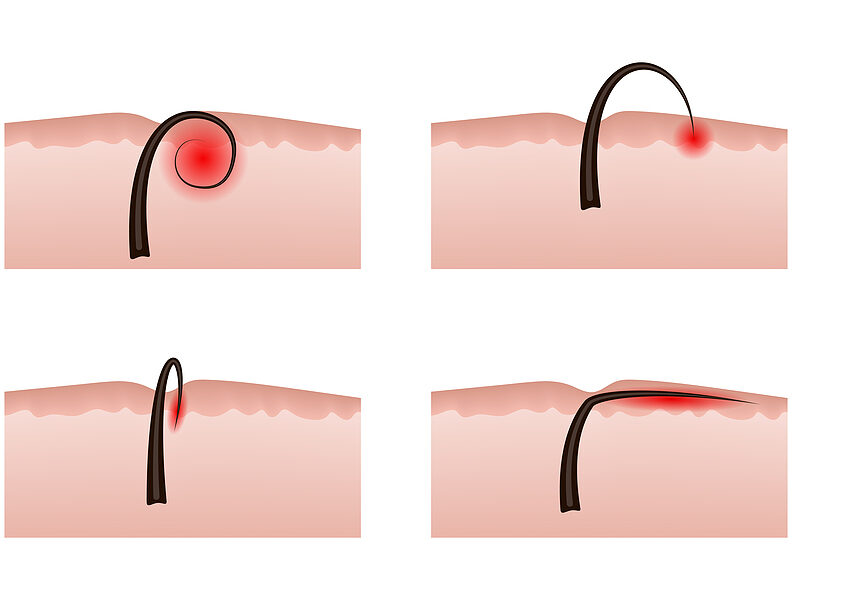Consequences of Plucking or Tweezing Hair
 Consequences of Plucking or Tweezing Hair
Consequences of Plucking or Tweezing Hair
The consequences of plucking or tweezing unwanted hair is not readily apparent. Most likely the very first way anyone ever removed a hair was by simply pulling it out with tweezers. Women particularly believe it to be the more feminine way to remove hair in comparison to other temporary methods such as shaving or depilatories. Women also believe tweezing to be the safest way to remove hair. The exact opposite is true, and this is why Electrologists instruct clients not to pluck or tweeze the growing hairs. Plucking or tweezing creates additional problems, and therefore is one of the least desirable ways to remove hair.
Tweezing – The Least Desirable Way to Remove Hair?
Let’s visualize the process. First you grasp the hair with a tweezer, pulling it gently; it stretches, the follicle is lifted, and then, as you continue to pull, the hair releases with a snap; the follicle and surrounding tissue is also released and snaps back into place. You feel success that you have plucked a hair. But, at the same time you have also set in motion the wheels that will perpetuate this sequence of events. You have begun a never-ending cycle which will tend to hasten the rate of the regrowth. It will also build the thickness, strengthen, and deepen the re-growing hair, thus making it darker as well.
Possibility of Infection
It will also increase the possibility of irritations and infections of the follicle which result in pitting and scarring. Finally, you will undoubtedly have made permanent hair removal by electrolysis more difficult to accomplish by created distorted follicles with the additional possibility of ingrown hair. All of this from a simple act of extracting a hair with tweezers.
A Rebuilding Process Begins Almost Immediately
When the hair is pulled from the papilla (the source of nourishment of hair) and out of the follicle, an increase in blood supply and a rebuilding process begins almost immediately. When tissue is damaged, the nature of normal body functions is such that it tends to rebuild that tissue stronger, and with an increased capillary system for a better blood supply as a means of protecting itself. This protective reaction occurs to the follicle and papilla of the forcibly extracted hair. With this increased blood supply now going to the germinative cells in the follicle and papilla, they will normally and naturally begin rebuilding a stronger, coarser, deeper, and darker hair to replace the one that has been removed.
Strength and Thickness Imperceptible at First
At first the increase in thickness, depth and strength will go unnoticed. As you continue plucking, each time the hair returns it gets stronger and thicker. The hair will now have grown into a robust, course, dark, bristly hair.
Distortion Caused by Plucking and Tweezing
As you continue to pluck, you may notice irritation beginning to develop in those areas from which you are removing the hair. Frequently, the irritation is due to distorted or ingrown hair, i.e., hair that is growing crooked out of a distorted follicle that begins to grow back into the skin again. This distortion can be caused by the constant lifting and tension applied to the follicle when the hair is removed by plucking or tweezing.
An additional effect of this method of hair removal, another cause of irritation, is the follicle wall, with the hair and sheath gone, becomes an excellent breeding ground for staphylococci bacteria, which can frequently be found in the follicle pore, and therefore, creates possibility of infections in this area, resulting in pitting and scarring.
A Permanent Solution
Electrolysis and laser hair removal are the only permanent methods to rid skin of unwanted hair. Your time will be well invested in either one of these methods of hair removal. While you commit to permanent hair removal treatments make sure you fight the urge to pluck or tweeze in between treatments. Also remember plucking or tweezing before your hair removal appointment will reduce the number of hairs your electrologist can remove during your hair removal treatment session.
